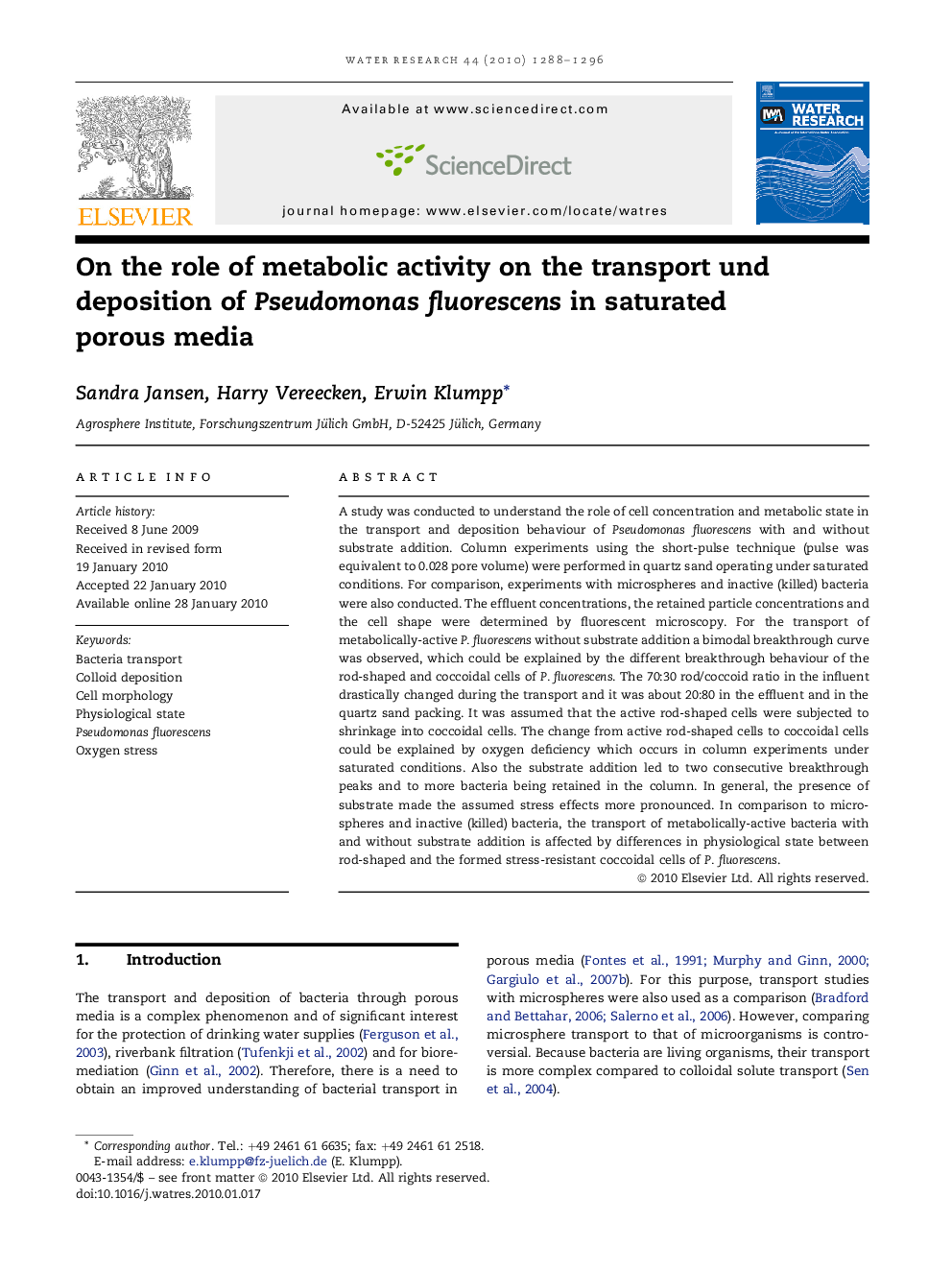| Article ID | Journal | Published Year | Pages | File Type |
|---|---|---|---|---|
| 4482503 | Water Research | 2010 | 9 Pages |
A study was conducted to understand the role of cell concentration and metabolic state in the transport and deposition behaviour of Pseudomonas fluorescens with and without substrate addition. Column experiments using the short-pulse technique (pulse was equivalent to 0.028 pore volume) were performed in quartz sand operating under saturated conditions. For comparison, experiments with microspheres and inactive (killed) bacteria were also conducted. The effluent concentrations, the retained particle concentrations and the cell shape were determined by fluorescent microscopy. For the transport of metabolically-active P. fluorescens without substrate addition a bimodal breakthrough curve was observed, which could be explained by the different breakthrough behaviour of the rod-shaped and coccoidal cells of P. fluorescens. The 70:30 rod/coccoid ratio in the influent drastically changed during the transport and it was about 20:80 in the effluent and in the quartz sand packing. It was assumed that the active rod-shaped cells were subjected to shrinkage into coccoidal cells. The change from active rod-shaped cells to coccoidal cells could be explained by oxygen deficiency which occurs in column experiments under saturated conditions. Also the substrate addition led to two consecutive breakthrough peaks and to more bacteria being retained in the column. In general, the presence of substrate made the assumed stress effects more pronounced. In comparison to microspheres and inactive (killed) bacteria, the transport of metabolically-active bacteria with and without substrate addition is affected by differences in physiological state between rod-shaped and the formed stress-resistant coccoidal cells of P. fluorescens.
